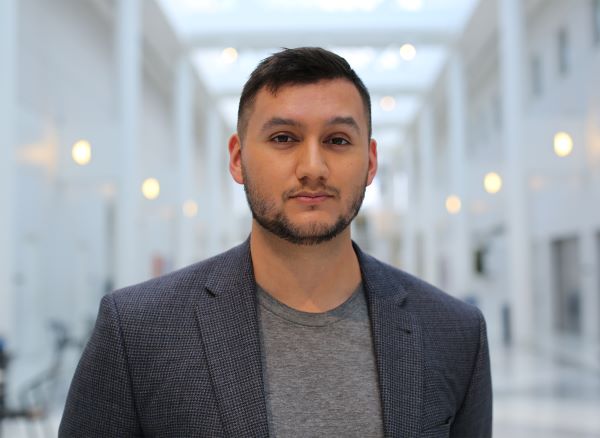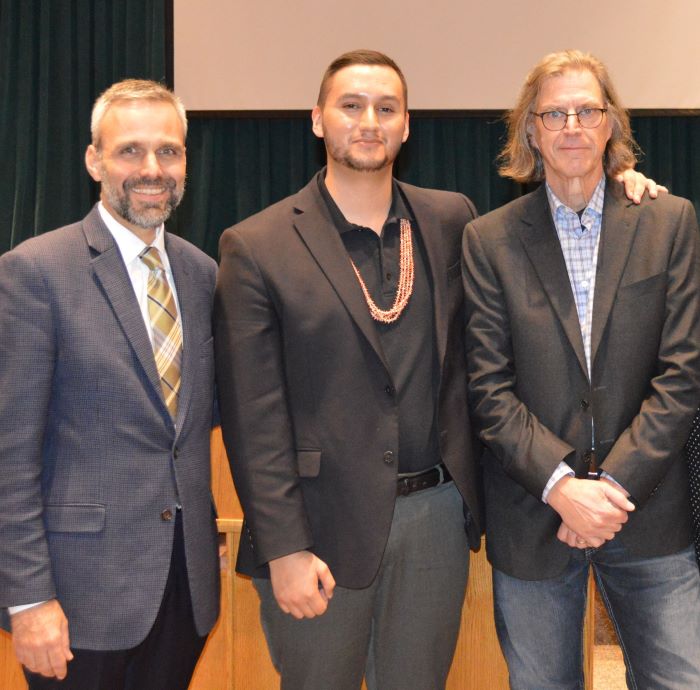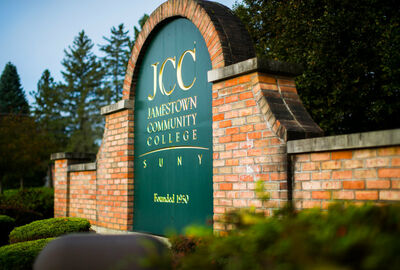Caleb Abrams' rise as a filmmaker can be traced back to a single assignment during his third semester of college.
A fine arts major at SUNY Jamestown Community College who liked painting and drawing, he decided to take a digital video editing class only because he had fun producing and editing news shows for the morning announcements at Salamanca High School.
So there he was, facing a final project of producing a five-minute video.
Those five minutes turned into 22 minutes and nine seconds that altered the course of his life.

Activated by the idea of educating his 12 classmates about his Seneca culture and more specifically the Kinzua Dam project that overtook Seneca land and displaced more than 600 citizens in the 1960s, Abrams created “Remembering the Removal.”
He entered the short documentary film into JCC’s student film festival, which led to more campus screenings. That triggered a short article in the Jamestown Post-Journal newspaper, which resulted in community screenings and presentations with local history and conservation groups.
“There were probably a few dozen screenings over the next couple years, and I was being introduced as a filmmaker,” Abrams said. “After that semester and during that period of time I began to embrace that idea of working in digital video and producing film, and sort of recognizing that this was just a new medium. Rather than painting or sculpting or drawing, I was now working with cameras and computers.”
Since the fall semester of 2010 at JCC, this is how Abrams’ life has evolved – one opportunity leading to another, all starting with an ambitious project that JCC professor Deb Lanni supported and one Abrams persisted through while finishing up other end-of-the-period assignments.
Abrams’ student documentary led to a position as associate producer for the PBS documentary “Lake of Betrayal: The Story of the Kinzua Dam,” which brought about a consulting role for the revival of the hit Showtime series “Dexter.”
Now living in Ontario, Abrams is finishing up a short film called “The Burning of My Coldspring Home,” which follows an elderly Seneca citizen who was forced to relocate with the Kinzua Dam construction. He is also working on a performance installation that focuses on Seneca Allegany Territory horror stories and is completing a screenplay for a film he hopes to fund with grants.
Dating back to his JCC student film, Abrams has remained dedicated to Seneca-focused projects. When he chose the theme of his final assignment in Lanni’s digital video class, he had recently attended the annual “Remember the Removal” event, where Seneca citizens visit condemned Kinzua communities that are below the floodplain but not under water.
It bothered him that few – if any – of his classmates even realized that Seneca territory was a short 15-minute drive from the campus in Jamestown. His first thought was to produce a video to Johnny Cash’s song “As Long as the Grass Shall Grow,” which centers on the loss of indigenous Seneca land from dam construction that was mandated by President Kennedy to control Allegheny River flooding.
Then, Abrams interviewed his father, grandmother, his Seneca history teacher at Salamanca High School, and other community members. Soon he had the foundation of a film that recalled the forcible relocation of Senecas, which included his father, grandparents, and extended family.
“I want to give professor Lanni a great deal of credit,” Abrams says. “She gave me full permission and support to do this. I think a lot of other professors would reasonably say, let’s keep it to five minutes, 10 minutes max. Not only did she encourage me, she would come in on the weekends and unlock the editing spaces for me to work.”
“At the time,” he added, “I didn’t really have any ambitions as a filmmaker or even for the project itself. I just produced it because I felt like I needed to. I was working through something in a way, trying to flesh out this story, having been through so many experiences those first three semesters where I felt like I didn’t represent myself or my people well. I didn’t know what to say. This was me saying something.”
Thanks to the Post-Journal newspaper article, Paul Lamont and Scott Sackett, the respective director and producer of “Lake of Betrayal,” found Abrams in 2013 while he was studying sociology and indigenous studies at Syracuse University.

Paul Lamont, director, during a "Lake of Betrayal" screening at
JCC in 2018.
Abrams was hired as a researcher and later promoted to associate producer for a documentary that built upon his student film and is still shown on PBS stations around the United States and Canada. The work reaffirmed his pursuit of filmmaking and “bolstered my sense of what was possible as a filmmaker,” he said.
“It really kept me engaged in the industry in a real-world way,” Abrams added. “I wasn’t in the classroom learning about it. I was in the field. I was working with veteran producers to tell this story. I will be forever grateful for the student film and those circumstances that helped it come to be. I don’t know if that film would have happened that way without my input, without that collaboration the three of us had together.”
The opportunity to shape the series “Dexter: New Blood” came in November 2020, when Abrams received an email from a Showtime executive.
The producers had written a script with Seneca characters that takes place in a fictional small town in upstate New York. But, as Abrams said, “They knew that they could only take the script so far without input from a Seneca person.”
Abrams pored over the script with producers and made recommendations for music, wardrobe, language, and more.
“I felt very heard and respected and involved in the process,” he said. “It wasn’t something that they were just looking for a stamp of approval. They worked with me. It was a wonderful experience.”
Abrams talks fondly about JCC and those who helped lay the path for his career. When asked about mentors, Abrams mentioned Lanni, now retired, even before Lamont and Sackett.
“She showed me what was possible in this medium in terms of storytelling,” he said. “I came from a more physical background – painting, drawing, even photography was something else I was kind of doing. This was new.”
Abrams is also thankful for local artist and JCC adjunct instructor Debra Eck, who supported his student documentary project, as well as professors Shannon Bessette and Becky Nystrom, “who played an important role in my time at JCC and have continued to be great supporters of me and my work.”
Abrams found JCC in much the same way he encountered filmmaking. He was looking at smaller colleges in Buffalo when he visited the Jamestown Campus for the first time.
“I was surprised, frankly, because I had no sense of what to expect,” Abrams said. “We took the tour and I met some of the professors. I didn’t really know what I wanted to do. I was voted most artistic in high school. I could draw, could paint.
“I was really enjoying art class,” he added. “Something just clicked for me when I took that course with professor Lanni. I knew that I had found my medium. I wasn’t leaving the arts. I just found the medium that I wanted to work in. I’m so glad I did.”

